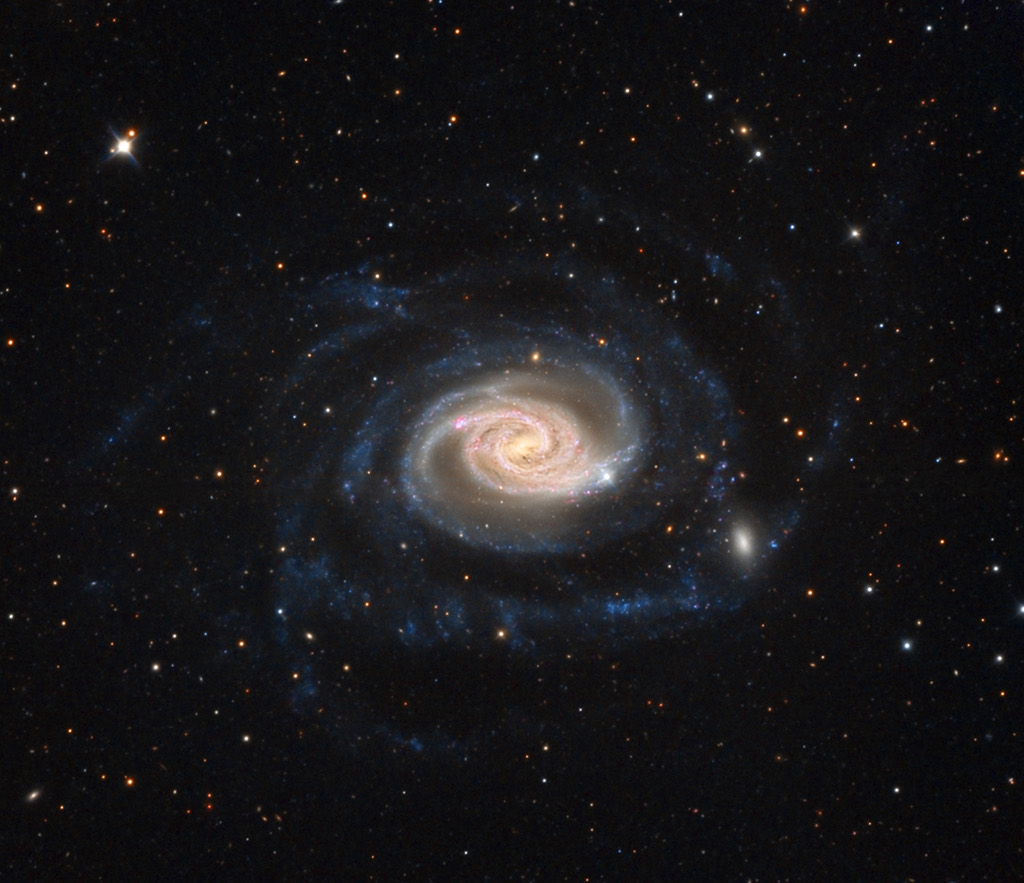Nice APOD! Let's compare Mike Selby's portrait of NGC 289 with Adam Block's:
NGC 289: Swirl in the Southern Sky. Image Credit & Copyright: Mike Selby
As you can see, the color balance of the two images is different, with Mike Selby's a little redder and Adam Block's a little bluer. Personally, I think it's a little easier to see the nature of the star formation in the inner spiral arms in Adam Block's image, but maybe that's just me.
In my comment on Adam Block's image (which was also an APOD) I gushed over Adam's picture, and then I said:
It is interesting that NGC 289 is interacting with a small companion. Other notable spiral galaxies are also interacting with dwarf satellites, such as NGC 1512 (seen in the link in a photo from NASA/JPL-Caltech) and NGC 6872 (in a photo from NASA/ESA Hubble Space Telescope’s Wide Field Planetary Camera 2 (WFPC2)).
I think that a companion galaxy can help "wind up" the spiral structure of a spiral galaxy. The Whirlpool galaxy is the classic example.
As it happened, I talked about NGC 1512 but showed a link to NGC 1097 instead! Ooops!
Well, let's look at the galaxies instead:
The classic example of a spiral galaxy being "wound up" by a companion is of course M51, the Whirlpool galaxy. But NGC 6872 may instead have been "unwound" and "stretched out" by its interactions with a companion, since the outstretched arms of this galaxy makes it (according to
Wikipedia) 522,000 light-years long! Wowzers!

Ann
 NGC 289: Swirl in the Southern Sky
NGC 289: Swirl in the Southern Sky





